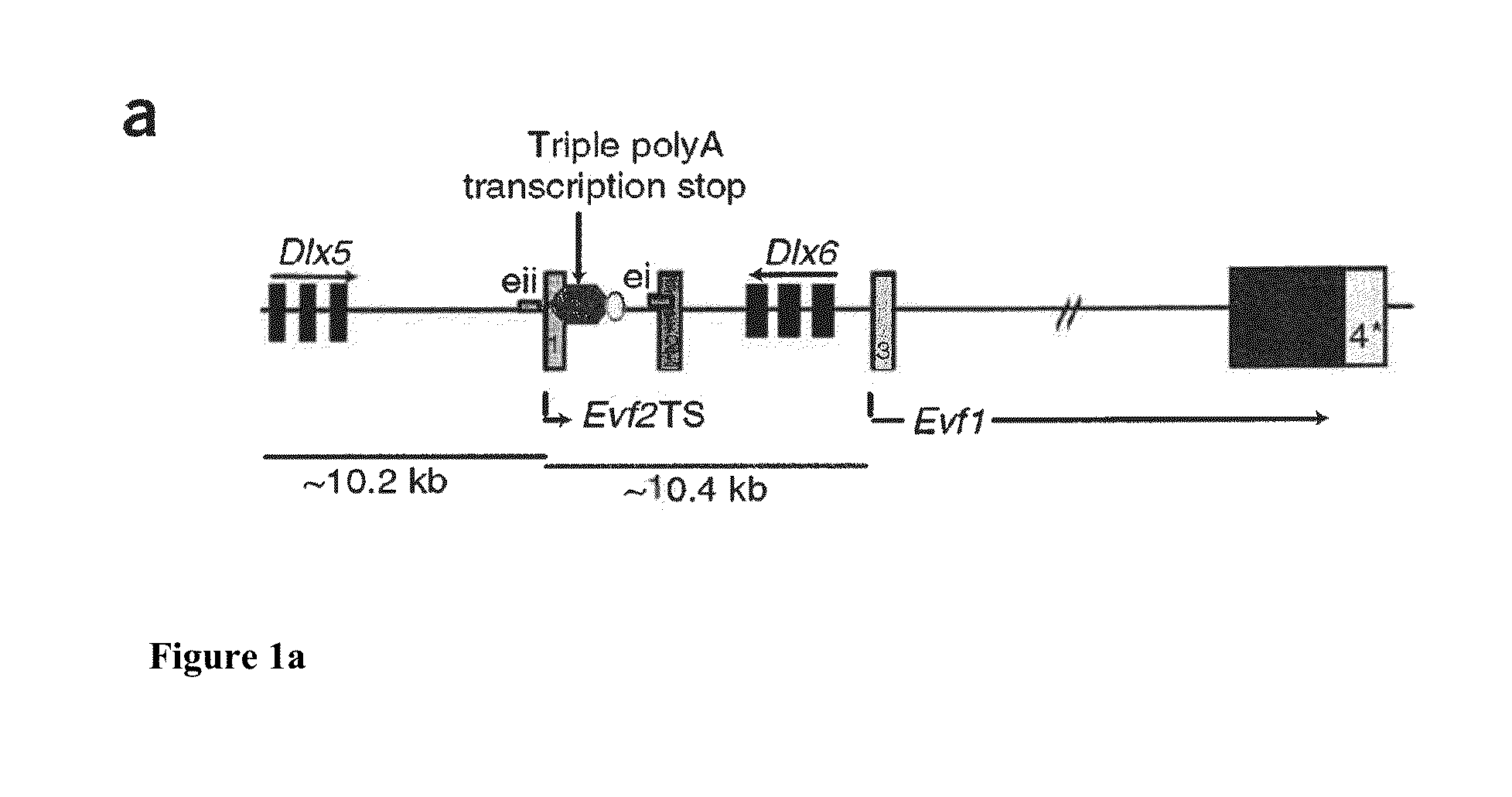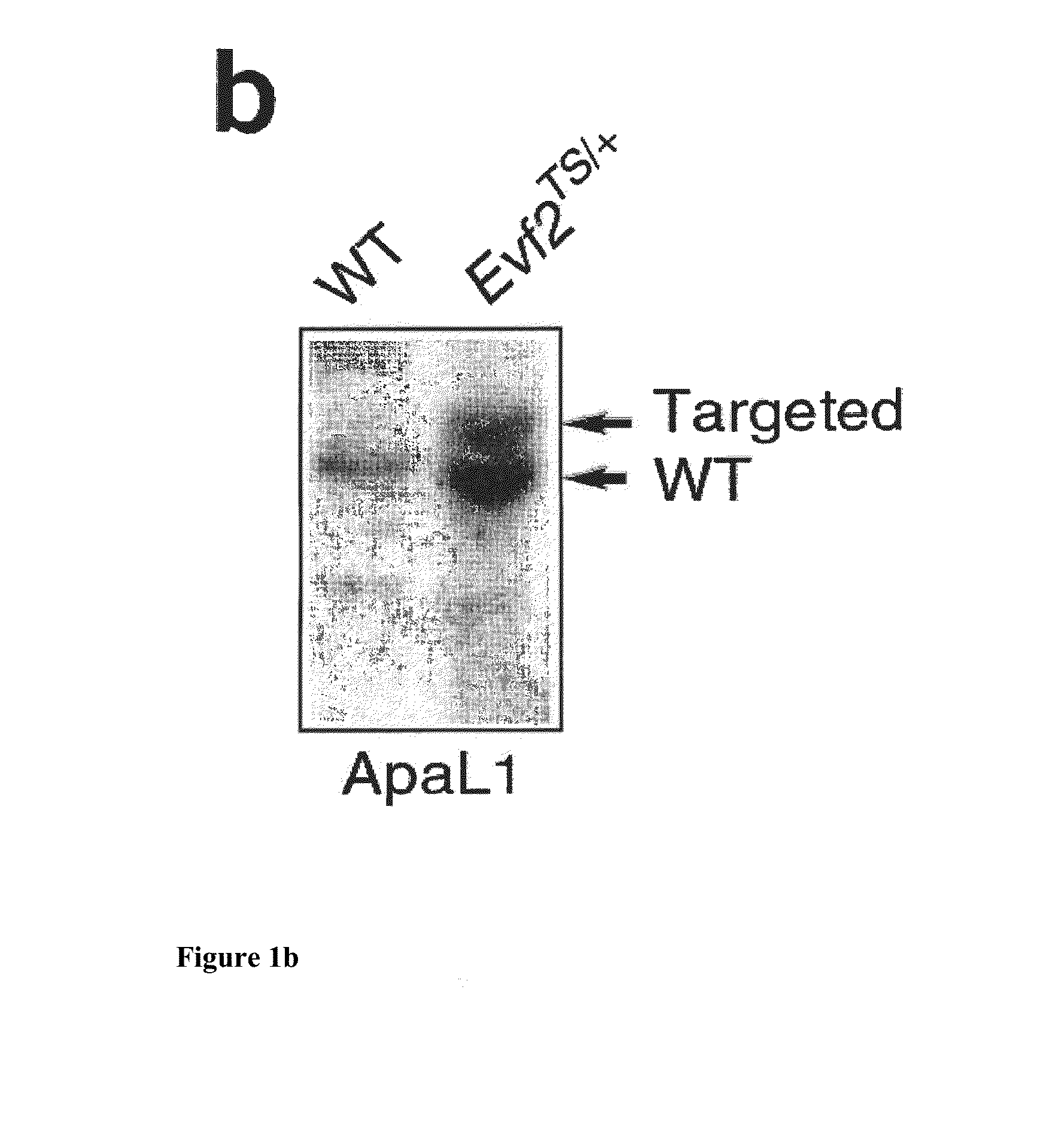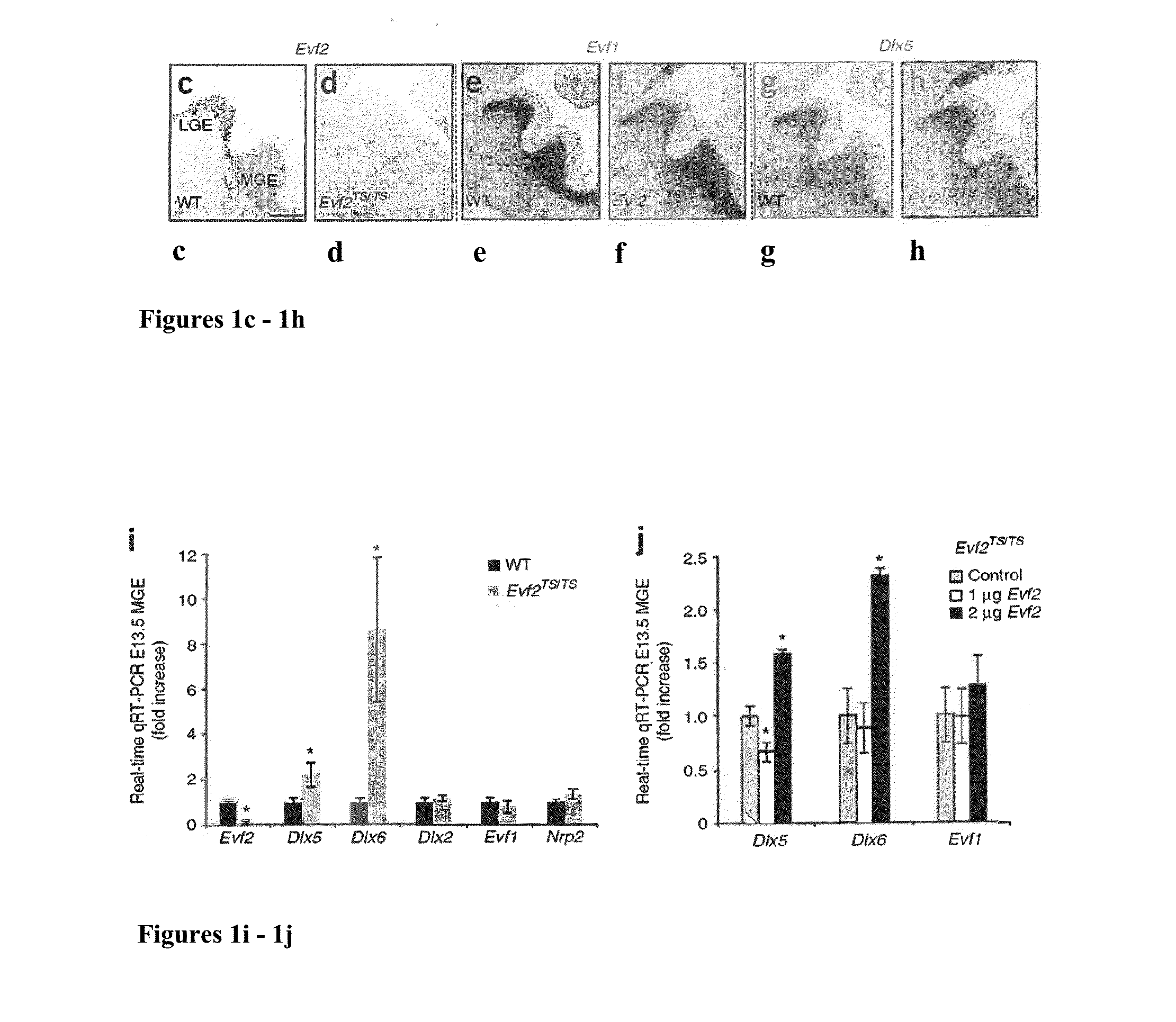Animal Models of Neurological Disorders
a neuropsychiatric disorder and animal model technology, applied in the field of neuropsychiatric disorders, can solve problems such as functional antagonism, and achieve the effect of reducing the expression of a functional ncrna evf1
- Summary
- Abstract
- Description
- Claims
- Application Information
AI Technical Summary
Benefits of technology
Problems solved by technology
Method used
Image
Examples
example 1
Preparation and Characterization of Evf2 Mutant Mice
[0083]The potential of the genome to code for functional noncoding RNAs (ncRNAs) is only beginning to be uncovered (Prasanth et al. (2007) and Mattick, et al. (2006). Although many ncRNAs belong to classes of small regulatory RNAs, one subset, long, polyadenylated ncRNAs (lpncRNAs), act cooperatively with protein partners (Shamovsky et al. (2006)). It was previously found that Evf2, a lpncRNA target of sonic hedgehog (SHH) signaling in the developing telencephalon, exhibits trans-acting transcriptional cooperativity with DLX homeodomain proteins, increasing Dlx5 / 6 enhancer activity in a neural stem cell line (Feng et al. (2006)). Identification of an ultraconserved Dlx5 / 6 intergenic DNA regulatory element (Zerucha et al. (2000) has led to the discovery of more than 1,000 ultraconserved DNA sequences near important developmental regulators or transcription factors (Gilligan et al. (2002), Santini et al. (2003), and Bejerano et al. (...
example 2
Preparation and Characterization of Evf1 Mutant Mice
[0155]An Evf1 mutant was prepared using similar techniques as for the preparation of the Evf2 mutant, by inserting a transcription stop sequence into the Evf sequence. For the preparation of the Evf1 mutant, the TS sequence was inserted into exon 3 of the Evf sequence, one (I) nucleotide from the start of Evf exon 3. The flanking sequences used were as follows: TCA AAG ATG GAC TGG [TS] GGA AAG ACA TTA AGT (SEQ ID NO: 50)
[0156]The largest possible Evf1 transcript in Evf1 TS / TS mice therefore would be 1 nt long.
[0157]A BAC containing the Evf1 exons upstream of the Dlx 5 / 6 region (schematized in FIG. 19) was constructed, electroporated into ES cells, and cells screened for single copy, non-homologous recombination by PCR and Southern. Dlx 6 was replaced by ER-cre-IRES-GFP in order to deliver a cytoplasmic form of tamoxifen-inducible ere and mark cells containing the rescue construct with GFP. A triple polyA site was inserted into the ...
example 3
Summary of Results
[0163]Two developmentally and spatially restricted, non-coding RNAs (Evfs) with overlapping expression patterns with the Dlx 5 and 6 homeobox genes have been identified. Like the Dlx genes, Evfs are targets of the key signaling protein, Sonic hedgehog. In cooperation with Dlx-2, Evf-1 or 2 can transcriptionally activate the mouse and zebrafish Dlx 5 / 6 and 4 / 6 enhancers. This cooperative effect on the Dlx 5 / 6 enhancer is both target specific, as well as limited to Dlx homeodomain containing proteins. Although the expression of Evfs and Dlx 5 / 6 overlap in the developing ventral forebrain, and post-natal subventricular zone, they diverge in hippocampus, olfactory bulb, and olfactory tubercle after birth. The close functional and developmental association between Evfs and Dlxs during development suggest that Evfs playa role in Dlx 5 / 6 regulation in vivo, and that disruption of this regulation may result in alterations in developmental processes known to be disrupted in...
PUM
 Login to View More
Login to View More Abstract
Description
Claims
Application Information
 Login to View More
Login to View More - R&D
- Intellectual Property
- Life Sciences
- Materials
- Tech Scout
- Unparalleled Data Quality
- Higher Quality Content
- 60% Fewer Hallucinations
Browse by: Latest US Patents, China's latest patents, Technical Efficacy Thesaurus, Application Domain, Technology Topic, Popular Technical Reports.
© 2025 PatSnap. All rights reserved.Legal|Privacy policy|Modern Slavery Act Transparency Statement|Sitemap|About US| Contact US: help@patsnap.com



